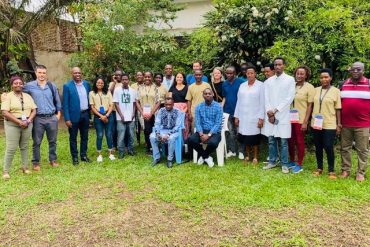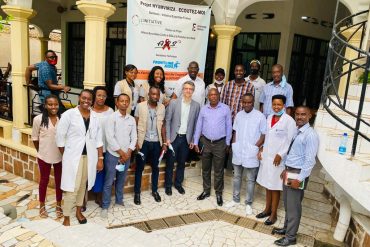- Background
90-90-90: An ambitious treatment target to help end the AIDS epidemic
Ending the AIDS epidemic is more than a historic obligation to the 39 million people who have died of the disease. It also represents a momentous opportunity to lay the foundation for a healthier, more just and equitable world for future generations. Ending the AIDS epidemic will inspire broader global health and development efforts, demonstrating what can be achieved through global solidarity, evidence-based action and multisectoral partnerships.
Although many strategies will be needed to close the book on the AIDS epidemic, one thing is certain. It will be impossible to end the epidemic without bringing HIV treatment to all who need it.
As the world contemplates the way forward following the 2015 deadline for the targets and commitments in the 2011 Political Declaration on HIV and AIDS, a final target is needed to drive progress towards the concluding chapter of the AIDS epidemic, promote accountability and unite diverse stakeholders in a common effort. Whereas previous AIDS targets sought to achieve incremental progress in the response, the aim in the post-2015 era is nothing less than the end of the AIDS epidemic by 2030.
In December 2013, the UNAIDS Programme Coordinating Board called on UNAIDS to support country- and region-led efforts to establish new targets for HIV treatment scale-up beyond 2015. In response, stakeholder consultations on new targets have been held in all regions of the world. At the global level, stakeholders assembled in a variety of thematic consultations focused on civil society, laboratory medicine, paediatric HIV treatment, adolescents and other key issues.
Powerful momentum is now building towards a new narrative on HIV treatment and a new, final, ambitious, but achievable target:
- By 2020, 90% of all people living with HIV will know their HIV status.
- By 2020, 90% of all people with diagnosed HIV infection will receive sustained antiretroviral therapy.
- By 2020, 90% of all people receiving antiretroviral therapy will have viral suppression.
http://www.unaids.org/en/resources/909090
Our organization is working to help attend these objectives by targeting key populations in the category of drug users whether injected or not. This category has been marginalized and we cannot reach objectives if we don’t involve them in the agenda.
According to a rapid assessment done in Bujumbura, 10, 2 % of drug users are HIV positive. We are running a project that aim to reduce the harm caused by the use of drugs whether injected or not. Most of drug users have dropped out school, living in the streets and keep exchange syringes while injecting drugs. The project is promoting unsafe injection, nutrition, hygiene and equipping drug users in skills that help them in their socio-professional reconversion.



